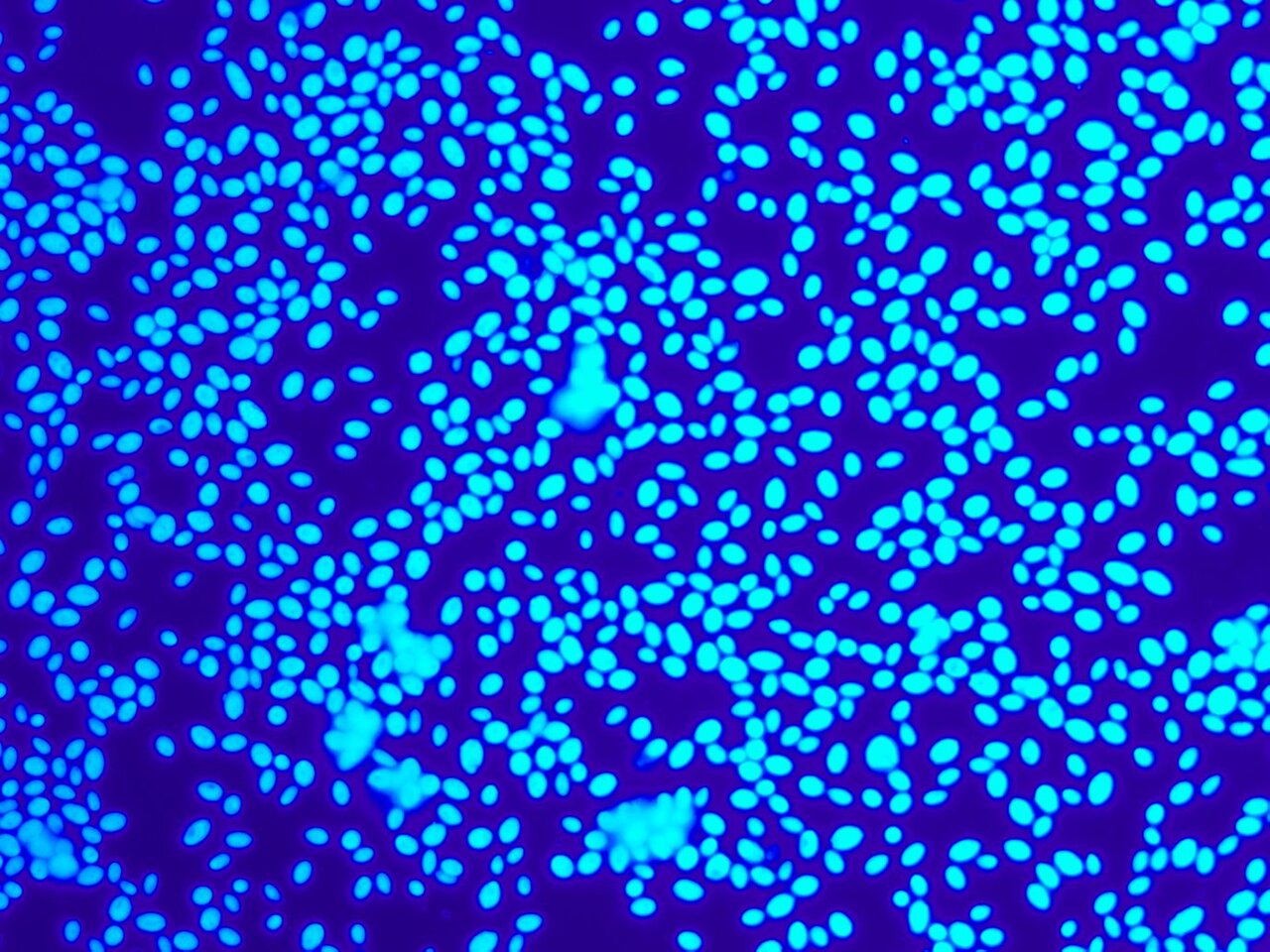Project
Tracing the flight of bioaerosols

Rapid detection of fluorescence-labeled biological tracer particles for investigation of the dispersal of airborne microorganisms and validation of dispersion models
Planned construction of animal housings lead more and more often to resistance in the local population. The reason: Emission of bioaerosols. We develop measuring systems to collect valid data and provide them for health assessment.
Background and Objective
The air in animal houses contains large amounts of microorganisms like bacteria and molds, which with the exhaust air get also to the outside. Near residents often suspect that these so-called bio-aerosols harm their health. There is also the danger of the transfer of diseases between livestock. At which conditions and distances this may occur is widely unclear. To investigate this with measurements of local concentrations is logistically complex and expensive. Therefore experts often use computer models to calculate the dispersion distances. The classical models were originally designed for the simulation of gases and dust and not for living (micro-)organisms. Our goal is to develop a method by which we can test, if already existing computer models can satisfactorily predict the dispersal of micro-organisms.
Target Group
Expert opinions of planed constructions of animal houses include also modeled dispersal of bioaerosols. Our data help regional authorities, environmental auditors and engineering consultants to furnish an opinion: They can better assess the results of dispersal models.
Approach
Together with the company Palas from Karlsruhe we are labeling harmless microorganisms with a non-toxic dye, which fluoresce under UV-light. Then we develop a measuring cell to detect these “tracer particles” in the air online. When we spray billions of tracer particles into the air of an animal house we can measure how much of these get into the outside and how far they fly. We compare the measured data with the computer simulation and evaluate the correspondent model.
Data and Methods
For the development of tracer particles we use classical microbiological methods and different fluorescence staining techniques. Engineering of the measuring cell requires great know-how of the company Palas in the field of particle detection with aerosol spectrometers.
Our Research Questions
Can we satisfactorily calculate the dispersal distance of micro-organisms from animal houses with dispersal models that were originally designed for the simulation of gases and dust?
Results
We were able to stain harmless yeast cells with a non-toxic dye and additives from the food industry. We can also already sample the tracer particles from the air with help of a special sampler and count them under a microscope or cultivate the yeasts onto nutrient plates. As soon as the measuring cell is finished we will be able to easily detect the tracer particles online. With help of multiple measuring cells we plan to build monitoring networks to measure the dispersal of airborne microorganisms online and to compare the data with the predictions of computer models.
Thünen-Contact

Involved external Thünen-Partners
-
Palas GmbH
(Karlsruhe, Deutschland)
Funding Body
-
Federal Ministry for Economic Affairs and Energy (BMWi)
(national, öffentlich)
Duration
9.2013 - 4.2016

![[Translate to English:] [Translate to English:]](/media/_processed_/3/6/csm_Hintergrund-Ausschnitt1_9daaef6b89.jpeg)
![[Translate to English:] [Translate to English:]](/media/_processed_/3/6/csm_Hintergrund-Ausschnitt1_0bd7111163.jpeg)





